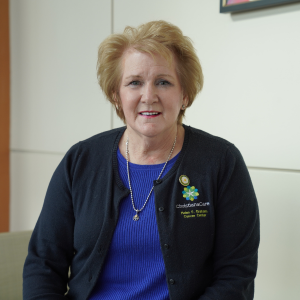
Getty Images/iStockphoto
Expanding Cancer Screening Access Beyond Charity Care
Charity care may cut some cost-related barriers to cancer screening access, but organizations need a bigger safety net for potential cancer treatments.
It’s not uncommon for healthcare organizations to set up free breast cancer screening events as part of their charity care efforts to serve low-income, uninsured people. But what happens when a screening turns into a breast cancer diagnosis, and that person is left on the hook for treatment costs?
That’s the looming question for healthcare organizations nationwide that are trying to close gaps in cancer screening by way of free or subsidized programs. While those screening events can move the needle on the number of people getting a breast cancer screen—especially low-income folks and people of color who are traditionally underserved by medicine and may experience distrust—they only get at part of the problem.
Because it’s not just the cost of the screening that keeps people from accessing it. When looking at low-income, uninsured populations—the people mostly affected by the cost of cancer screening—there’s always the concern about what comes next: the cost of treatment if doctors actually detect a tumor.
There’s no precise figure for how much it costs to have breast cancer because it depends on a patient’s course of treatment, as well as how far the cancer has progressed upon diagnosis.
One 2016 study put the average allowable cost in the first year after diagnosis anywhere from around $60,000 for Stage 0 to $134,000 for Stage IV breast cancer. This was a study of women who had commercial health insurance.
A separate analysis by Bankrate put the cost of breast cancer without insurance at between $10,000 and $200,000, depending on cancer stage; those with insurance can expect to pay between 10 and 15 percent of that.
Knowing those costs could be down the pike is enough to deter some patients from getting screened all together, according to Nora Katurakes, RN, OCN, manager of the Graham Cancer Center’s Community Outreach & Education program.

“When you're diagnosed with breast cancer, there's treatment dollars, there's the cost for the medications, there's the transportation dollars,” she told PatientEngagementHIT in a video chat. “If you bring somebody in and you recruit them for screening, it's perhaps a disservice if you can't help them along the journey to the completion.”
That bears out in the data. In February 2023, a survey commissioned by the Alliance for Women’s Health and Prevention (AWHP) showed that 14 percent of women had skipped a preventive test or screening in the past 12 months, with cost being one of the key barriers.
Separate data published in JAMA Network Open particularly revealed cost-related adherence barriers for follow-up cancer screening diagnostics. When a payer required cost-sharing for follow-up diagnostics, patients didn’t access them.
In other words, when a patient doesn’t know how they’d pay for disease treatment, they aren’t necessarily going to access preventive screening for that disease.
That’s a problem Katurakes’ team at ChristianaCare’s Helen F. Graham Cancer Center & Research Institute is trying to solve through a renewed partnership with Susan G. Komen Foundation. ChristianaCare has a long history with Komen, Katurakes said in the interview, but this latest deal was announced in June and detailed how the cancer center would go beyond free and subsidized cancer screening.
Because ChristianaCare works so closely with Komen, it will also open doors to diagnostic follow-up that is often required after an irregular mammogram and create pathways to referral into Komen’s financial assistance programs.
It’s that longitudinal picture of financial assistance that Katurakes said will make all of the difference. This program will be tailored to low-income people with household incomes at or below 300 percent of the federal poverty level, which shakes out to $43,740 for a single person and $59,160 for a household of two.
Katurakes also said the program will be tailored to reaching Black women in Delaware, who are disproportionately impacted by breast cancer and have lower screening rates.
These two populations of focus mean that gaining patient trust will be of utmost importance to increasing baseline screening rates. To that end, Katurakes said it’s essential that the organization can get the word out about how the screenings—and any potential follow-up care or treatment—will be financed.
“It really does make you, as a provider, very aware of that,” she mentioned. “People aren't going to trust you if you don't tell them the whole picture in terms of who's going to cover the cost.”
Once patients get approved by Komen for care, those patients are able to choose ChristianaCare for their cancer treatments, both organizations made clear in a press release.
Of course, access to initial screening is at the center of the program. While making clear the funding mechanisms that will help cover a patient should they need a full course of breast cancer treatment is crucial, Katurakes said it was important to leverage community ties to first open the doors to care access.
“I have a team of eight outreach workers. We are out all the time in the community talking about a lot of our cancer screening topics,” she explained. “But we always will mention and carry messaging around these assistance programs.”
Having those concrete patient education materials makes it easier for an individual to circle back with the organization if they feel comfortable. For example, Katurakes and her team prepare resource bags to hand out at the Food Bank of Delaware and tuck different referral materials inside.
“People are there for food, but we'll say, ‘if you need help with a mammogram or if you need help with colon screening, here's my business card,’” Katurakes said. “And we've gotten calls because the person liked the interaction. You know, the first impression can make all the difference in the world. ‘Something you said made me feel comfortable, and I'll take that next step.’”
She also stressed the importance of having a continual presence in the community and tapping community-based partners to support people who might need help scheduling a screening. That helps enhance patient navigation and get people in for care more seamlessly.
ChristianaCare has partnerships with senior centers and certain religious groups, and through community-based patient navigators, the organization can get people in for screenings when it is most convenient for them.
All along the way, Katurakes’ team emphasizes that there are ways to get financial help to ensure patients continue to access care, especially if an abnormal mammogram result comes back. While community partners are essential for initially discussing funding with patients, Katurakes said it’s key to close the loop with the providers who ultimately conduct the screening and review results with patients.
“The other thing we've done here at the cancer center is we've done some internal education for our providers,” she concluded. “We're constantly trying to remind them of the resources that are there to help the women with that next step.”







